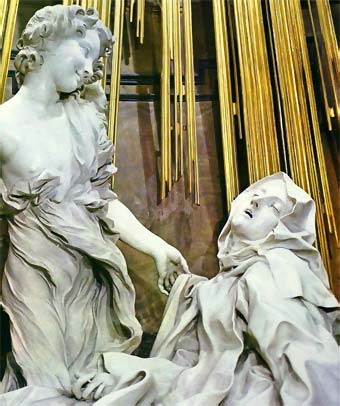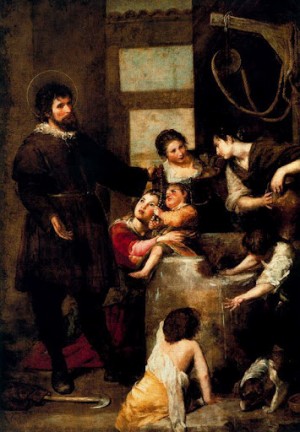Ecstasy of Saint Teresa
Historical and artistic context
- Time: 1644-1652
- Style: 17th century Baroque Art
- Artist: Gian Lorenzo Bernini
- Material and technique: White marble. Arquitecture
- Location:St Maria de la Victoria.Rome (Italy)

Iconographic analysis
- Name: The Ecstasy of Saint Teresa
- Type of building : It’s a sculpture in side the St M.Victoria Church.
Formal analysis
- Compostion, space, decoration:
- Size of the sculpture:
MEANING: The moment represents summit of her, ecstasy on having seen Christ. There is so royal the expression of happiness, which was with drawn from the public sight on the part of the Popes
The miracle of the well
Historical and artistic context
- Time: 1638-1640
- Style: 17th century Baroque Art
- Artist: Alonso Cano (1601-1665)
- Material and technique: Oil on canvas. Paint
- Location: Prado’s museum. Madrid
Iconographic analysis
- Name: El milagro del pozo
- Type of paint : It’s a Barroque paint on oil on canvas, which was painted by Cano in Spain.
Formal analysis
- Compostion, space, decoration: It’s in the Prado’s museum.
- Size of the paint: 215 x 150cm
MEANING: it tells the salvation of a child for the employer of Madrid, san Isidro Labrador


No comments:
Post a Comment
Note: Only a member of this blog may post a comment.